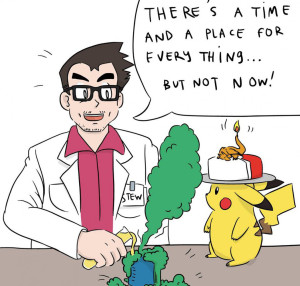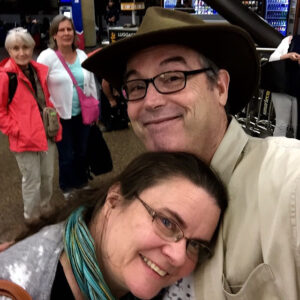by Roberto
If I were asked to name scientists who have deeply influenced the evolution of my own thinking along the decades, there's little doubt that Julian Davies would be at the top of the list. Julian died this past February 2nd, shortly after turning 93. My intention here is not to write an obituary; his colleagues from University of British Columbia memorialized him nicely in the ASM's website. Rather, I'll share a few personal memories of my interactions over many decades with this remarkable man.
Julian Davies. Source
Our first encounter, if memory serves me right, was at the 1978 Cold Spring Harbor Symposium. It was an important gathering to celebrate the 25th anniversary of the discovery of the double helix. It was also one of my first scientific meetings. Feeling very awkward amongst all the molecular biology celebrities present, it was a wonderful relief to have the famous Julian Davies come by and show interest in my work. That began a friendship that lasted for decades. During the 1980s and 1990s our paths crossed many times, often at scientific meetings. Then, starting in 1998 and for more than two decades, we met (almost) yearly at the Spetses and Dubrovnik Summer Schools. We became good friends. Without fail, in his presentations and our discussions it was very clear that he was an "out of the box" thinker. This was also clear in many of his publications. I'll follow with a few examples. (And by the way, I'm confident you will enjoy reading Julian's STC posts on small molecules and attending conferences.)
I forget what Gordon Conference it was, but during his presentation on the possible origins of antibiotic resistance genes he noted that some antibiotic preparations contained trace amounts of the DNA of the producing organism. Of course, those microbes would have genes that rendered them immune to the action of the antibiotic. What better setting to transfer those genes to other bacteria than within a patient undergoing treatment with that drug? I don't know whether such a tranfer has ever been demonstrated but I do know that hearing of the idea forced me to think deeply about the origins of antibiotic resistance.
In 1990 Julian wrote a provocative essay entitled: "What are antibiotics? Archaic functions for modern activities." In it he put forth the idea that "from the beginnings of biochemical evolution structures of the antibiotic type were formed by chemical condensations in the absence of enzymes. These molecules played roles in primitive reactions as… actual catalysts (non-peptide forerunners of enzymes) in a variety of condensation reactions such as translation, transcription, etc." Once again, his ideas forced me to think deeply. Is it possible that at one time antibiotics were the functional precursors of, for example, ribosomal proteins? The fact that several modern-day antibiotics bind to conserved regions of ribosomal RNA supports this idea.
I found most thought-provoking Julian's studies on the effects of antibiotics at subinhibitory concentrations. In his 2006 review on the subject, he states: "all antibiotics, regardless of their receptors and mode of action, exhibit the phenomenon of hormesis and provoke considerable transcription activation at low concentrations." This, coupled with the fact that in many natural settings antibiotics are made in very small amounts, leads to the inescapable conclusion that these molecules are not used exclusively as killing agents in microbiological warfare. Rather, they might often serve as cues (and even as signals) that trigger global physiological changes, but do not cause death, in the recipient cells. Such a view still goes contrary to the thinking of many chemical and evolutionary biologists. But it is a view that I have explored and discussed repeatedly in my own writings.
In recent years Julian turned his attention to the search for alternative strategies that might help alleviate the antibiotic resistance crisis. Specifically, he investigated the ancient medicinal applications of natural clay minerals. In a series of fascinating studies, which I followed with alacrity, he reported on the potent antibacterial activity and microbial diversity of Kisameet Clay, a medicinal clay used by indigenous people of British Columbia for many generations. The concept emerges that the simultaneous application of many different antimicrobials each one at very low concentrations might, in the long run, be more effective and less prone to the problems of resistance. I strongly believe in this concept. But when I've discussed this idea with colleagues steeped in the process of drug development, they see no clear path for such approaches to pass the current regulatory hurdles. So, while in nature this may be the way that antimicrobials function best, the concept – like a lot of Julian's thinking – may be way ahead of its time.
Without a doubt, the piece of Julian's writing that most deeply affected me was his "Everything Depends on Everything Else" essay from 2009, inspired by the credo of the Haida people. As I have elaborated on elsewhere, this essay is Julian's philosophical treatment of the interconnectedness of everything which, in his opinion, in the microbial world is largely mediated through small molecules. Reading this essay helped me solidify my own thoughts on universal interconnectedness evolving from the age-old tenet of Buddhist philosophy: This is because that is…
As I close my eyes before writing these last few lines what I see is not only Julian the inspiring scientist. I see him enthusiastically riding a bicycle up and down steep hills as we circle the island of Spetses. He is smiling, he emanates good cheer, and he is still there.
Do you want to comment on this post? We would be delighted to hear from you! Please send us an email, or comment on Mastodon or Bluesky. We'll be posting comment threads that arise below (with your permission). Feel free to subscribe if you'd like to get regular notifications about new blog posts.
Comments Arriving
From Fernando Baquero: In the field of microbiological sciences, my dear friend Julian Davies was a catalyst for research that opened new avenues of knowledge. For some mysterious reason, certain microbiologists become fascinated by intracellular pathogens, and I'm sure Julian was one of them, at least during a significant period of his fruitful life. His focal point was Mycobacterium, which was closely related to his old family, Streptomyces. During his second stay at the Pasteur Institute in 1985, while working in the biotechnology department, he influenced the Mycobacterium research conducted by Brigitte Gicquel and the Spanish microbiologist Rafael Gómez-Lus. By the way, the disciple and follower of Gómez-Lus at the University of Zaragoza, Carlos Martin, is now in the final phase of human testing for the promising new vaccine MTBVAC. At the Pasteur Institute, he also deeply influenced Pascale Cossart, who was seeking a field of research in non-tuberculous intracellular pathogens. Ultimately, she chose Listeria monocytogenes as a model organism and developed a splendid scientific career, contributing significantly to our understanding of intracellular pathogen biology. In summary, everything that a unique scientist like Julian is able to produce has cascading consequences in the global network of science. As he stated in the title of a Review published in 2009, "everything depends on everything else."
From Amy Cheng Vollmer: I so enjoyed your STC remembrance of Julian and the impact that he had on you. I only met him once for about 20 minutes, but his joy for science and discovery was completely contagious – and infected me for life!
From Paul Rainey (via Bluesky): Poignant memory: Bellagio, Rockefeller centre. Sitting beside fire. Rest earned. Julian decides we need drama. A real life whodunnit unfolds. Exceptionally reluctant actor was appointed protagonist. Turns out I could act. Successfully incriminated Jeff H Miller for sloppy repair.

